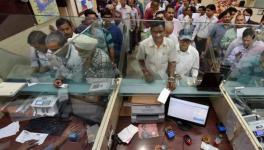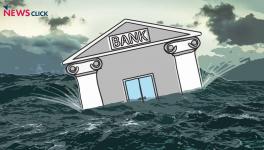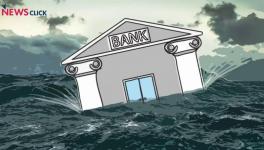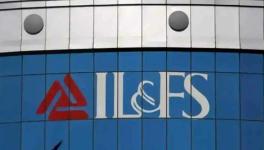Is Serial Defaulter IL&FS Heading For A Rapid-Fire Sale of Assets?
The current crisis was in-built in the financing model followed by the infra major that focused on short-term debts to finance long-term projects.
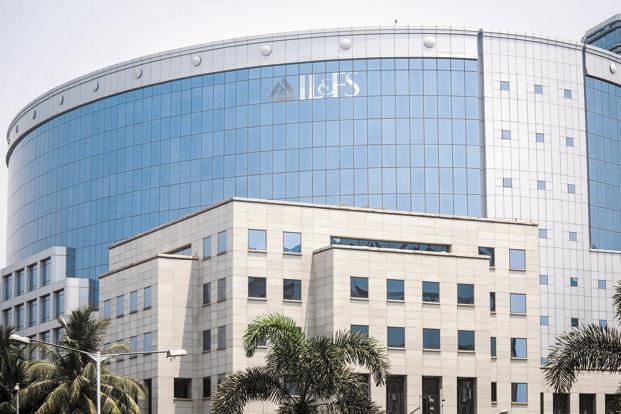
Image Courtesy : Livemint
Infrastructure Leasing and Financial Services Ltd (IL&FS) is not the first victim of an asset-liability mismatch and is unlikely to be the last in the high finance world. The infra major's problems stemmed from the inability of its assets and infrastructure projects to raise enough cash flows to service the interest and principal payments of its debt service obligations.
“IL&FS is like a man with no income but with multiple credit cards, using one to service the dues of another, till debt catches up!” This was pretty accurate prognosis that was narrated by a public sector general manager way back in 1998.
Paying for focus on short-term debt
IL&FS was created as a specialised non-bank finance company to raise funds for infrastructure projects to take advantage of the large leverage. Typically, finance companies can leverage up to eight times their net worth for raising capital. But IL&FS had focused on raising short-term debt. Unless there is a continuous refinancing of maturing liabilities, mismatches are bound to occur, which is precisely what appears to have happened.
Utilising short-term funds has inherent advantages, in the form of high returns,. This is because long-term borrowings are expensive and hurt profits. IL&FS followed methods of funding that involved utilising short-term borrowings to fund long-term projects. The methods adopted included raising short-term funds and financing asset build-up, comprising power projects, roads, bypasses, airports and even water projects.
Since projects generate cash for paying for the debt service only after a long gap, promoters like IL&FS resort to refinancing. In simple terms, this means paying off short-term borrowings with more short-term borrowings. This strategy is also essentially intended to help contain project costs. This is because short-term rates tend to be low and long-term rates high. So, borrowing long-term implied that high-interest costs could impact project tariffs, especially since the mandated borrowings comprise at least 80% of project funds. So, while fixing power tariffs or user fees for roads, airports or ports, the interest is loaded on to tariffs.
However, there are risks as well. In reality, short-term rates could rise, and tighten liquidity conditions. Two years ago, the short-term rate band was between 6% and 6.5%. This is now between 9% and 15.5%. This is making refinancing of loans a challenge, since it would mean repaying a low interest borrowing with a high interest loan. In the case of the IL&FS, a significant component of borrowings were short-term. This comes out in the company’sbalance sheet . Its short-term borrowings, including commercial paper, short-term debentures and inter-corporate deposits, are worth Rs 13,600 crore. Another Rs 19,000 crore is in the form of debentures. Both these components together comprised at least 36% of its borrowings.
Impending Default Warning in May?
But to be fair to IL&FS, the company had admitted way back in May this year that it faced headwinds. Its managing director Ramesh Bawa hinted in an interview to The Mint that all was not well in the company and that refinancing was becoming a challenge. “Right now the financial institutions, specially the PSU (public sector undertaking) banks, are under pressure. There are a large number of NPAs (non-performing assets) and banks are booking losses. It’s becoming difficult for them to take more exposure to infrastructure assets. For players like us, we are continuously busy implementing infra projects and we cannot wait for the cycle to come back, so we have to look for alternative avenues of funding.”
Bawa chose his words carefully, but with enough hints that a default was coming. In fact, as early as August this year, in a press statement, IL&FS again dropped hints of a potential default. In a statement released after a board meeting for raising Rs 9,000 crore through a rights issue on August 29, IL&FS said, “The Board took cognizance of the fact that the situation of over- leverage and illiquidity had arisen as a significant percentage of the Group’s liquidity, aggregating to over Rs 16,000 crore, was stuck in claims and termination payments.” The only entities that missed out on these hints were the rating agencies and, not surprisingly, the financial media.
Rating Agencies' Big Miss
As a result, when IL&FS notified investors on September 14, 2018, of an impending default on commercial paper default, it created ripples in both rating agencies and the media. IL&FS, after all, had been a darling and role model financier for the rating agencies. Until IL&FS made this admission, rating agencies, ICRA ( Moody’s associate in India ), India Rating (a Fitch associate) and CARE, had only kept the company on rating watch and the only downgrade on instruments was from “AAA” to AA+ (double A plus) with absolutely no hint of the impending default. These grades are on top of the rating scale, implying very high levels of safety.
Had the rating agencies actually anticipated the situation, the downgrade would have been lower than “BB” ( double B) or equivalent, conveying that the potential of default risk was high. Lehman Brothers and the US financial crisis of 2008 had deeply undermined the credibility of the big three (Moody’s, Standard & Poor's and Fitch) agencies. In the IL&FS saga, the Indian rating agencies credit rating agencies’ credibility stands completely wrecked.
However, the reality is that most banks, especially public sector banks, were already expecting such a situation ahead of the rating agencies.Some public sector banks, like State Bank of India, and others had already choked off credit lines in a bid to cut exposure. The banks' stance was driven by the fact that they already had non-performing assets on their balance sheets of almost close to 11% of the gross assets, and were, therefore, unwilling to take in more.
Besides, banks credit support to IL&FS is collateralised and fully secured. Therefore, banks have the option of invoking the Reserve Bank of India’s bankruptcy code on IL&FS if there are defaults in settlement of bank loans, which has so far not occurred though the risk still remains. Some circular flow of funds is expected to preempt defaults in bank loans. This means the equity funds raised would be used to settle bank liabilities.
Life Insurance Corporation and SBI, stakeholders in IL&FS, have already indicated that they would subscribe to their share in the Rs 9,000 crore issue. Yet their assurances are hardly succour, since Orix of Japan has imposed conditions indicating that they would prefer to own majority stake to bail out IL&FS.
The Fallout
It is the mutual funds that stand to lose the most in the serial defaults. After all, IL&FS debentures and the commercial papers were largely subscribed by the funds, both debt and balanced funds. Defaults mean that mutual funds would have to bear capital losses on their IL&FS investments.
The IL&FS fallout is unlikely to be restricted to Indian markets alone. The infra major had also raised funds in the global market through issue of masala bonds (rupee-denominated international bonds) and Dim Sum Bonds ( Renminbi Yuan denominated bonds) for infrastructure projects through its subsidiaries. The masala loan amounting to $50 million is due for repayment in 2019 and the $155 Yuan Dim Sum bond is maturing in 2021.
Yet, the defaults are not likely stop. Between September 17 and the 29 this year, IL&FS has remained a serial defaulter ranging from commercial paper obligations to debenture servicing obligations. Given this situation, it would imply that fund- raising in the global markets that it planned for all its ventures would be well nigh impossible. Moreover, with the existing level of defaults, the ability of IL&FS to raise fresh funds from the domestic markets for refinancing maturing obligations and interest dues stands severely eroded.
Besides, unlike public sector banks, IL&FS is an NBFC. It, therefore, comes lower in the financial system hierarchy. That would leave the company ill-qualified for a government bail-out. But a RBI/government intervention is very much on the cards. The only difference is that government intervention is unlikely to be in form of capital infusion. That is reserved for public sector banks.
Instead, interventions are expected elsewhere. IL&FS has close to 200 special purpose companies, under direct ownership and through joint ventures with state governments, public and private sector entities. Consequently, government interventions could most likely be through rapid-fire sale of assets or, in other words, a steep discount. In 2008, the US Fed had instigated a fire sale of assets, mortgage-backed assets of insurance major AIG, Lehman Brothers and other financial institutions to settle liabilities. J P Morgan had acquired Bear Stearns through the fire sale. IL&FS assets could also face a similar situation and maybe a haircut to salvage its sunk credibility!
C Shivkumar has over 30 years of experience in financial journalism, including Business Standard and Hindu Business Line. He has also been a foreign exchange trader in a well-known broking company. He now pursues his passion in wildlife photography and farming based out of Kotagiri in Nilgiris district, Tamil Nadu.
Get the latest reports & analysis with people's perspective on Protests, movements & deep analytical videos, discussions of the current affairs in your Telegram app. Subscribe to NewsClick's Telegram channel & get Real-Time updates on stories, as they get published on our website.











